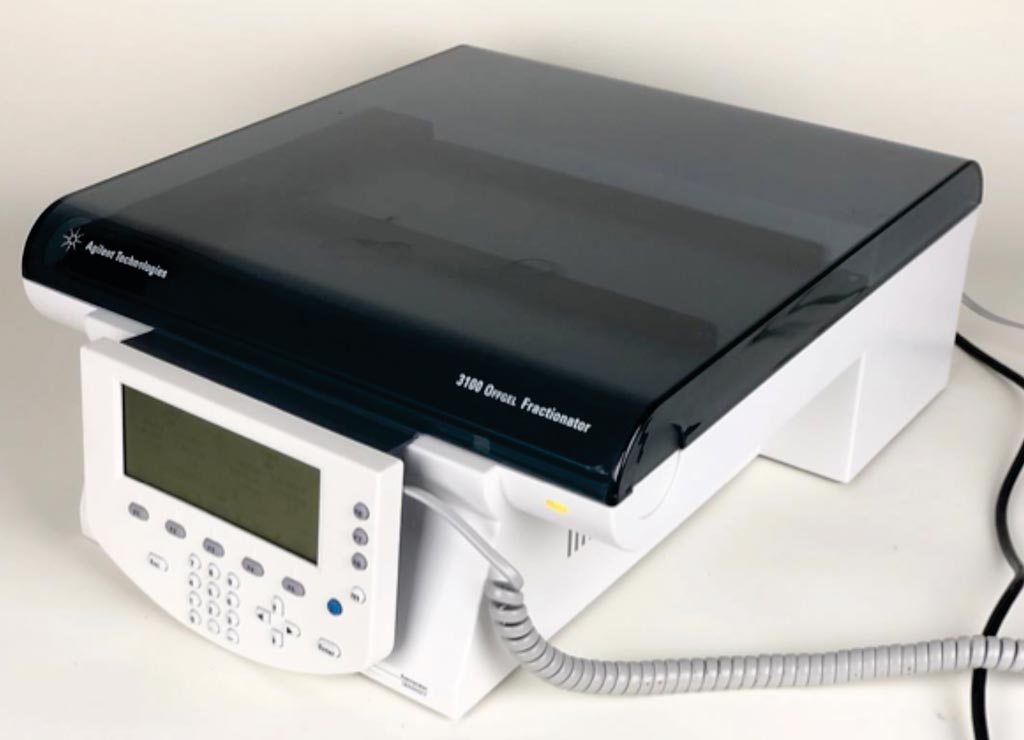Blood Test Detects Alzheimer's Disease before Symptoms Appear
By LabMedica International staff writers
Posted on 27 Feb 2019
A blood-based assessment of preclinical disease would have huge potential in the enrichment of participants for Alzheimer’s disease (AD) therapeutic trials. Much effort has been dedicated to the discovery of single- and multianalyte protein markers to differentiate AD from age-matched cognitively unimpaired individuals.Posted on 27 Feb 2019
Ultrasensitive immunoassay and immunoprecipitation mass spectrometry (MS) methods have recently reported plasma amyloid β (Aβ) ratios as being able to predict Aβ positron emission tomography (PET). However, there has been limited investigation using untargeted methods in the discovery of novel blood markers that could reflect Aβ burden.

Image: The 3100 OFFGEL Fractionator (Photo courtesy of Agilent Technologies).
A large international team of scientists led by the group from King’s College London (London, UK) started by measuring protein group levels in blood samples from 238 (cognitively unimpaired) people participating in two Australian-based biomarker and aging studies. All of the donors had previously undergone PET scans to determine their Aβ status. The team then built a computer model to classify proteins and then analyzed data from participants in one of the biomarker and aging study groups with a machine-learning algorithm designed to learn to identify markers indicating preclinical Alzheimer's disease. Then they tested the system on data from the second group of study participants.
Some of the methodology used by the scientist included immunodepletion, enzymatic digestion, and tandem mass tag peptide labeling. Albumin and immunoglobulin G immuno-depletion was achieved by a commercially available ProteoPrep immunoaffinity column. Peptide separation was achieved using the 3100 OFFGEL Fractionator with a 24-well setup. Liquid chromatography–tandem MS (LC-MS/MS) analysis, chromatographic separation and mass spectra acquisition was performed using the LTQ Orbitrap Velos Pro.
The team reported that preliminary testing showed the technique to be 90% accurate in matching results obtained from PET scan testing. They report also that their system found 10 protein features that together represent a biomarker, two of which had been identified as possibilities previously. The serine protease prothrombin (a precursor to thrombin) was the highest ranked feature in the cognitively unimpaired cohort. At the univariate level, prothrombin (or coagulation factor II) was shown to be decreased in Aβ+ individuals but had a modest effect size. Two protein groups were specifically associated with Aβ burden in cognitively unimpaired individuals (GPR115 and RPS6KA3). GPR115 was the second most important feature, after prothrombin, offering it as a potential marker of early Aβ deposition.
The authors concluded that using an unbiased MS approach, they found and replicated with high accuracy, specificity, and sensitivity a plasma protein classifier reflecting Aβ burden in a cognitively unimpaired cohort. These predictive panels highlighted novel and established markers for AD. The study was published on February 6, 2019, in the journal Science Advances.
Related Links:
King’s College London













